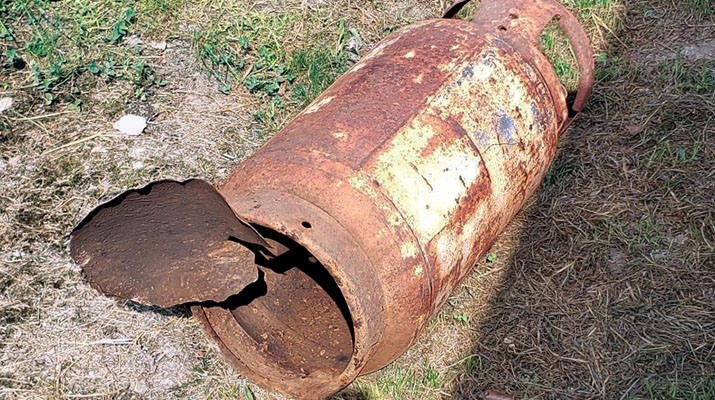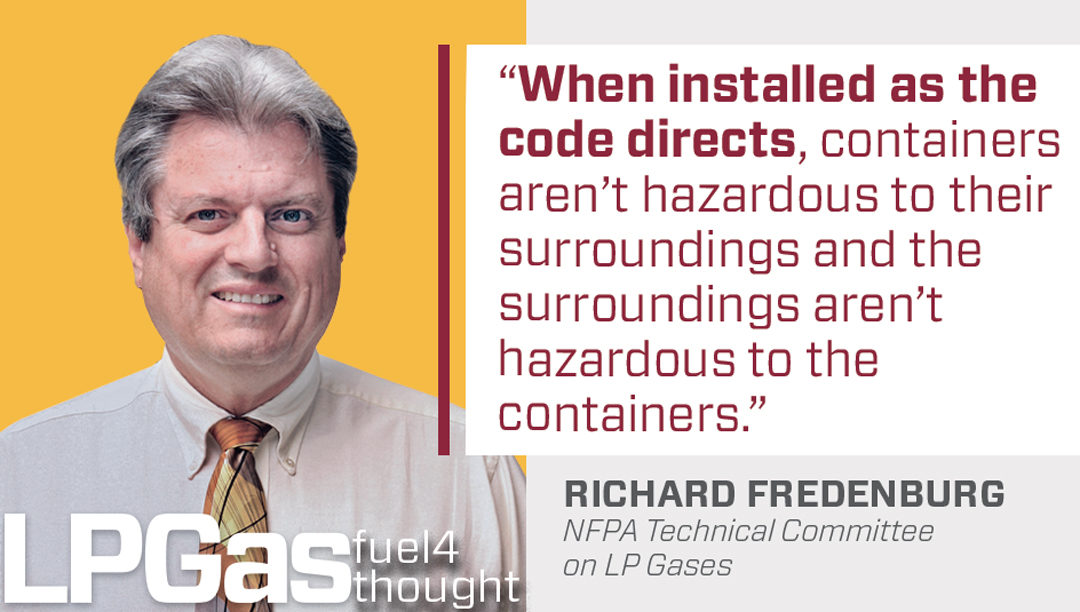Stay safe when installing, filling propane containers
Siting of propane containers is the most common question I receive. Filling containers is the most common hazard.

Propane professionals must “watch out for No. 1” to stay safe when filling cylinders. (Photo courtesy of NCDA & CS)
Installing propane containers
NFPA 58 devotes its longest chapter (6) to the installation of containers and equipment. Requirements address:
- Separation of containers from buildings, equipment and hazards.
- Requirements for components in container openings and piping to prevent or control releases when something unexpected happens away from the container.
- Protection of containers at various installations, with an emphasis on those installed at dispensers.
Most of the installation requirements are unchanged over my 29 years as an enforcer. Modest changes have occurred as new equipment, redesigns or complications with existing rules are identified and added to this chapter.
I have been involved in many discussions at the technical committee about these requirements. Few of them have been quarrelsome, likely because there is consensus about the code’s correctness. When installed as the code directs, containers aren’t hazardous to their surroundings and the surroundings aren’t hazardous to the containers.
Filling propane containers
Chapter 7 addresses filling containers, whether large or small, in a safe way. Most of the big safety issues occur in violation of these rules.
I think many in the industry would agree that most incidents occur when transferring LP gases.
Equipment failures account for a minor share of those incidents. A notorious equipment failure in 1996 started with the liquid transfer hose from the transport to the bulk plant bulkhead coming apart, which revealed that the back-flow check valve at the bulkhead was broken. The combined losses from the bulk plant and transport of about 45,000 gallons of propane led to far-reaching changes in DOT regulations and significant changes to NFPA 58. Thankfully, no fire, deaths, injuries or property damage occurred.
Related to transfers are pull-away incidents. These incidents result in some equipment damage, but current rules on piping and valving seem to prevent major product releases. That was not always the case in the past.

Personal safety
My concern is that employees are not being vigilant enough about their own safety. Self safety tends to go awry when filling cylinders of all sizes.
Installation characteristics lead to many incidents. Larger cylinders, 100 pounds and 100 gallons, are often set so their bottoms are difficult or impossible to examine without disconnecting and removing them. We have reports of, and have investigated, 100-pound cylinders that took off like rockets when their bottoms blew out while being filled.
These incidents may not have occurred if the filler followed NFPA 58 section 7.2.2.18: “A container shall not be filled if the container assembly does not meet the requirements for continued service.” The filler must examine the entire cylinder for defects, damage and corrosion prior to filling and can refuse to fill any container that would compromise their or customers’ safety.
We refer to this self-safety principle as “watching out for No. 1.”
Our program finds the highest number of transfer violations when cylinders are filled at dispensing sites. Failure to examine cylinders thoroughly for corrosion, confirm qualification dates, remove sleeves and examine face seals in filler valves places the filler and nearby customers at risk.
Multiple hazards are present at many filling locations and under many conditions. One equipment supplier at a recent regional association safety meeting created a poster for the back of bobtails listing many situations in which a driver can improve safety, including a statement about drivers taking responsibility for their own safety.
Management’s support is key to employees accepting and implementing self safety. Management should never imply that taking a shortcut on safety is proper or acceptable.
Richard Fredenburg is an LP gas engineer at the North Carolina Department of Agriculture and Consumer Services, Standards Division. He is also a member of NFPA’s Technical Committee on LP Gases. Contact him at richard.fredenburg@ncagr.gov or 984-236-4752.
NOTE: The opinions and viewpoints expressed herein are solely the author’s and should in no way be interpreted as those of LP Gas magazine or any of its staff members.
















